Would you know the difference? There are philosophies and training elements that make D.O. physicians unique from their M.D. counterparts. Hopefully, I can shed some light on these differences and the historical basis for them.
There are two ways to become a physician in the United States: the allopathic tract, culminating in an M.D. degree, and the osteopathic route, in which a medical student becomes a D.O. As you would expect, the road to become a doctor (M.D. or D.O.) is rigorous, requiring a four-year undergraduate degree, four years of graduate training, three written board exams and a clinical skills exam, followed by postgraduate training to specialize in a particular branch of medicine. D.O.’s and M.D.’s are able to prescribe medications, recommend therapy, perform surgery, and deliver babies and both occupy every branch of medicine, from general primary care to the most specialized of surgical specialties.
Roots of Osteopathic Medicine
Osteopathy was founded by Andrew Taylor Still in 1892 in the rural Missouri town of Kirksville. A.T. Still was an M.D. by training, but in the mid-late 1800’s, medicine included some practices that would now seem barbaric, crazy, and even harmful to patients. A.T. Still believed there had to be better ways to improve overall health without subjecting patients to unnecessary risk. He left the allopathic mainstream to found osteopathic medicine.
It was a grassroots movement, founded on tenets that mind, body, and spirit are completely connected and restoring health depends on addressing each of these components as a unified whole. Further, osteopathy was based on the belief that structure and function of the body are absolutely dependent upon one another. By addressing cognitive, physical and spiritual aspects of health, structure and function can be maximized, allowing the body to return to a natural state of health.
Osteopathic training emphasizes treating a patient as a “whole person”. The musculoskeletal system, consisting of muscles, bones, and nerves, makes up two-thirds of the body’s mass. Osteopathic training provides medical students with intensive education in how illness or injury to one part of the body can affect other areas as well. OMT (osteopathic manipulation treatment) enables D.O’s to carefully examine the structures of the body, diagnose illness or injury, and encourage more natural alignment to allow the body’s natural tendency to restore health. OMT does not employ medications that may have adverse side effects or subject patients to inherent risks of surgical intervention. Instead, OMT provides a non-invasive treatment that can be administered with very little risk to the patient.
OMT is certainly not the answer to every ailment impacting human health. There are most definitely diseases that must be addressed with medication and/or surgical intervention, in spite of the potential risks. In my experience as a D.O., osteopaths who become highly specialized, particularly in surgical specialties, are less likely to use OMT regularly.
As an OB/Gyn physician, much of my daily practice is very similar to that of my M.D. counterparts and does not incorporate a lot of OMT due to time restrictions and space or equipment limitations. That doesn’t mean that all of my osteopathic training was lost though–I firmly believe my physical exam skills were enhanced by the hours spent learning to feel subtle changes in both bony and soft tissue structures. In modern medicine, where we rely so heavily on high-tech advances in radiology or laboratory studies to identify and diagnose disease, a lot of useful information can be gained by using one’s hands to perform a thorough physical examination.
Modern Osteopathy – Legacy of A.T. Still
Osteopathy is now one of the fastest growing segments of the health care industry. A.T Still’s philosophies have become the basis of medical training at 30 accredited colleges of osteopathic medicine, delivering instruction at 42 teaching locations in 28 states. In the 2014-15 academic year, 24,600 students are being educated to become future D.O.’s. This accounts for over 20% the U.S. medical student population. By the year 2020, there are estimated to be 100,000 actively practicing osteopathic physicians in this country.
Dr. Kyla Carlson, D.O., Billings OB-GYN Associates
Sources
- DiGiovanna, Eileen L.; Schiowitz, Stanley; Dowling, Dennis J. (2004). An Osteopathic Approach to Diagnosis and Treatment (3 ed.). Lippincott Williams & Wilkins. ISBN 978-0-7817-4293-1
- www.aacom.org
- www.osteopathic.org
- www.mentalfloss.com

